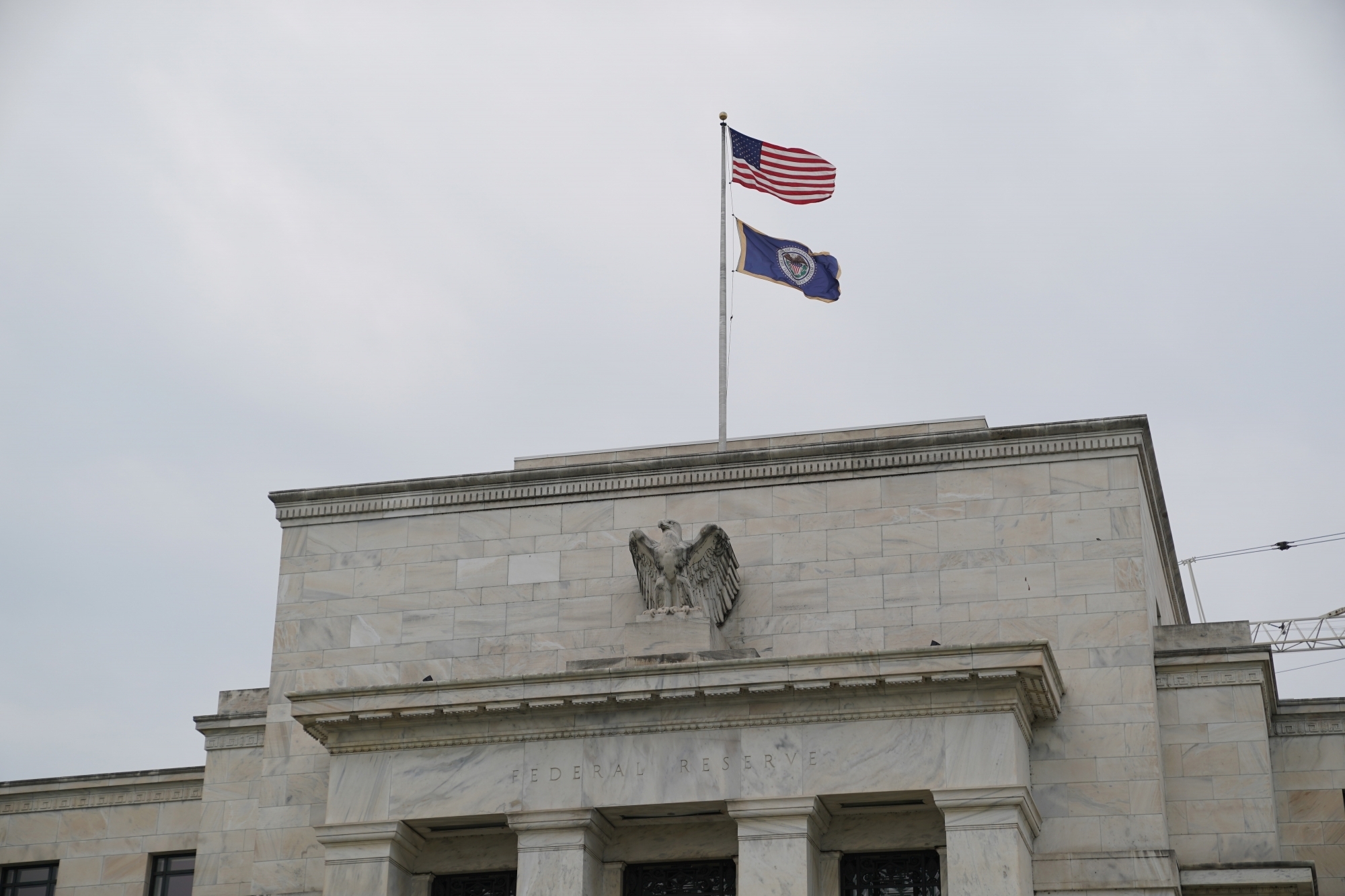The Federal Reserve is expected to leave interest rates unchanged on Wednesday, even as President Donald Trump continued to push the U.S. central bank to cut borrowing costs.
Trump, who last week made a rare presidential visit to the Fed’s headquarters in Washington as part of a campaign to pressure Fed Chair Jerome Powell, used the release of second-quarter economic growth numbers to argue for lower rates in order to “let people buy, and refinance, their homes!”
In a post on his Truth Social media platform, Trump described the 3% annualized growth rate as “better than expected” and said it should lead the Fed to cut borrowing costs – the opposite response central bankers would likely have to growth that would usually be considered beyond the economy’s underlying potential and likely to feed inflation.
In this case, however, the headline GDP figure was driven by a dramatic rise and fall in imports over the first six months of the year due to the Trump administration’s tariff policies, and it masked signs of underlying weakness that may in fact bolster the case for the Fed to reduce rates at its September 16-17 meeting.
The weakness cut across housing, business investment and domestic demand, with private sales to domestic purchasers, often mentioned by Fed officials as a proxy for the strength of the domestic economy, growing at just a 1.2% annualized rate.
The Fed will release its latest policy decision at 2 p.m. EDT. Powell is scheduled to hold a press conference half an hour later.
Trump’s demands for sharply lower rates, which have coincided with an unrelenting campaign of attacks by the president and administration officials on Powell, have made little impression on policymakers. Even rate-cut advocates on the policy-setting Federal Open Market Committee favor a more traditional quarter-percentage-point cut at this week’s meeting, not the aggressive rate slashing embraced by the White House.
The president has suggested the Fed cut the benchmark rate from the current 4.25%-4.50% range to as low as 1% – far out of line with an economy that has hewn largely to a steady-as-it-goes trajectory in the six weeks since the Fed’s last meeting, and more in line with what the central bank would do to lift the economy out of recession.
Fed Governor Christopher Waller and Vice Chair for Supervision Michelle Bowman have both said they would support lowering rates at this meeting, and could issue dissents if the Fed on Wednesday holds the policy rate steady for the fifth consecutive time since December.
More closely watched will be any clue in the wording of the Fed’s policy decision or in Powell’s post-meeting press conference about the possibility of a rate cut in September, a move consistent with both current market pricing of federal funds contracts and the median outlook Fed officials held as of June when they anticipated two quarter-percentage-point rate reductions by the end of the year.
PRESSURE CAMPAIGN
With inflation still above the Fed’s 2% target and the unemployment rate remaining low, it’s unclear how far the statement or Powell will go in providing guidance about the September meeting, with two months of inflation and jobs data still to come before then.
While unlikely to sway the outcome of this Fed meeting, the GDP number could buttress the case for a rate cut in September, and bolster the arguments laid out by Waller that any impact of tariffs on inflation will be modest, and allow the Fed to begin easing monetary policy before the economy begins to slide.
Heading into the July meeting, however, that was a minority view, with policymakers still more concerned that inflation might prove tougher to contain than expected as businesses decided whether to absorb or pass along the new import tariffs.
“We expect the Fed to hold rates steady for the fifth straight meeting and largely maintain existing signals about the policy outlook,” Deutsche Bank economist Matthew Luzzetti and his colleagues wrote ahead of this week’s meeting. They said they anticipated both Bowman and Waller would dissent, marking the first time since 1993 that two Fed governors will have broken with the consensus.
“In terms of near-term policy, Powell is unlikely to remove a September rate cut from consideration nor intentionally raise the probability of that outcome. Instead, ahead of key data releases – including two more jobs and inflation reports – we expect he will continue to indicate the Fed’s data-dependent stance, which will entail making decisions on a meeting by-meeting basis,” the Deutsche Bank analysts said.
Policymakers have taken a “wait-and-see” approach to rate cuts since December, when Trump’s recent election victory and impending inauguration raised the possibility in the minds of many economists that what had been a steady decline in inflation might reverse, at least temporarily, if the administration followed through with its campaign promises to slap steep tariffs on imports, limit labor force growth by deporting immigrants, and boost demand with tax cuts and higher deficits.
The import duties that have been imposed so far are in key ways lower than initially threatened by the administration, but are still significant – and in the latest Consumer Price Index report had begun pushing goods prices higher.
Trump, who campaigned on a promise to lower prices, has insisted that inflation is not a risk and urged immediate rate cuts, slamming Powell for, in the president’s view, forcing his government to pay more to finance its deficits and leading to higher mortgage rates for potential home buyers.
The pressure campaign appeared to culminate last week when administration criticism of a Fed building renovation project led Trump to visit the site to see it for himself. The visit seemed to put to rest risks that Trump would try to fire Powell over the project, even as the rate cut demands continue.
Powell has said he intends to serve as Fed chief until his term expires next May.
(Reuters)










